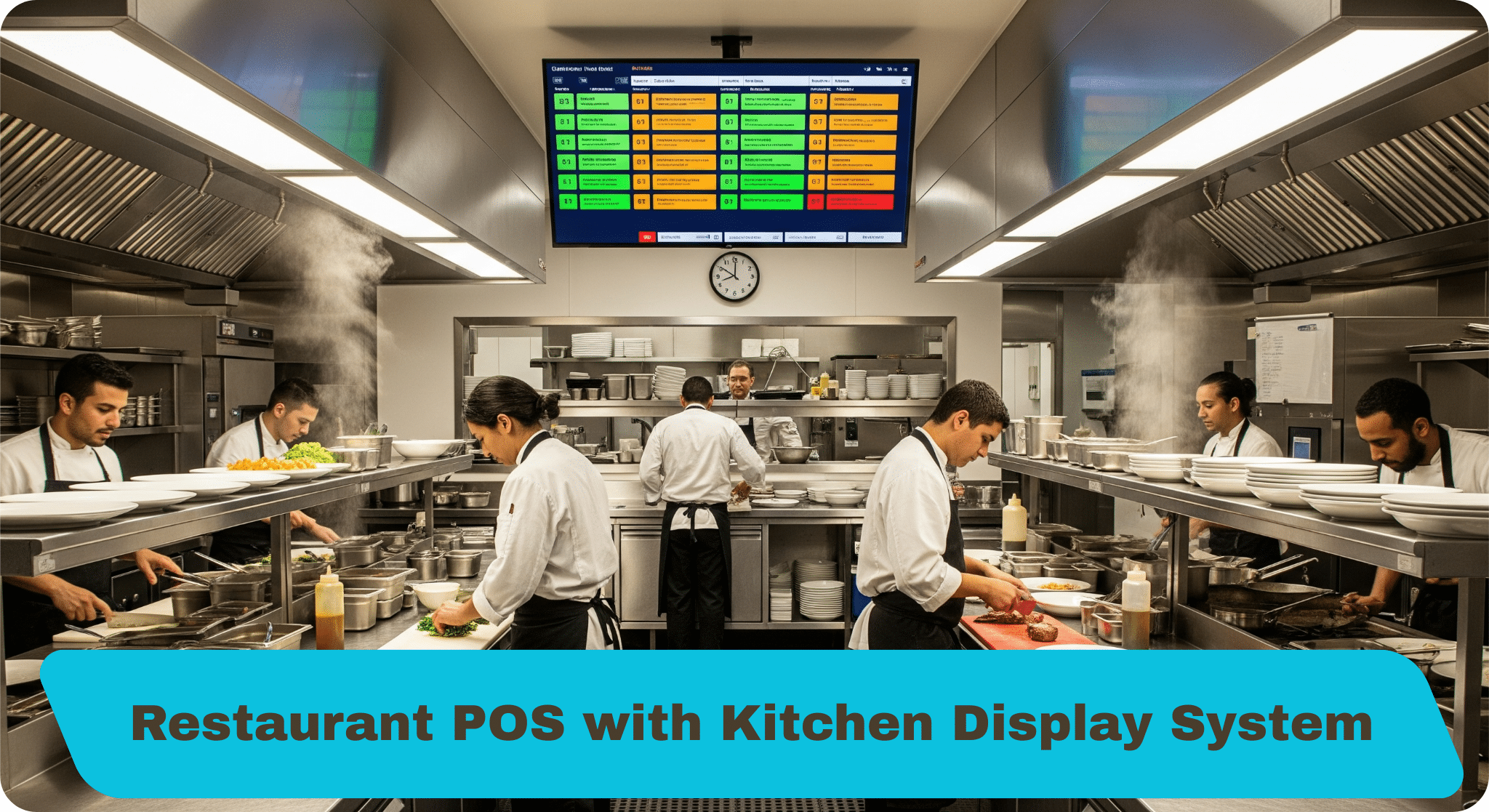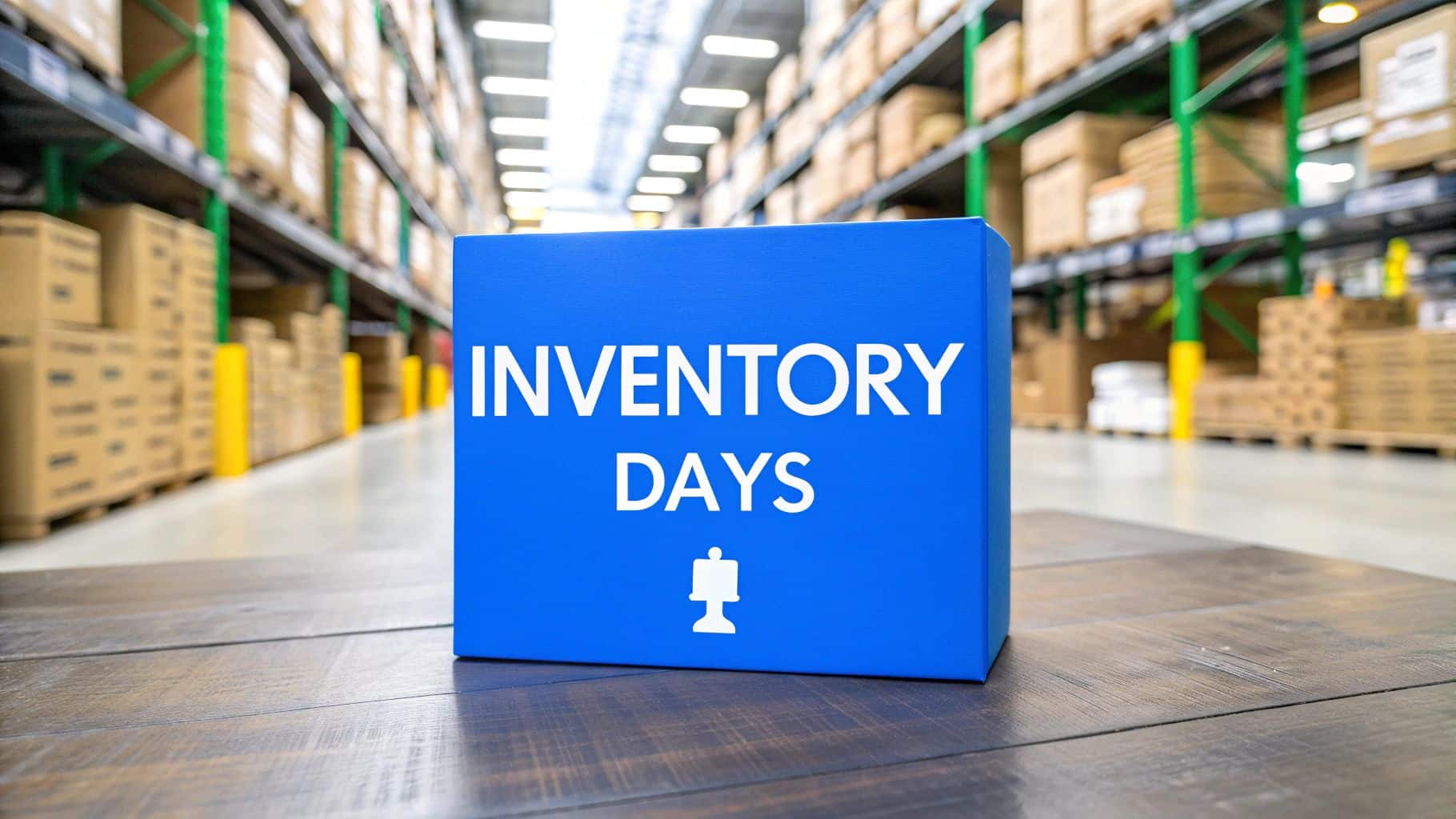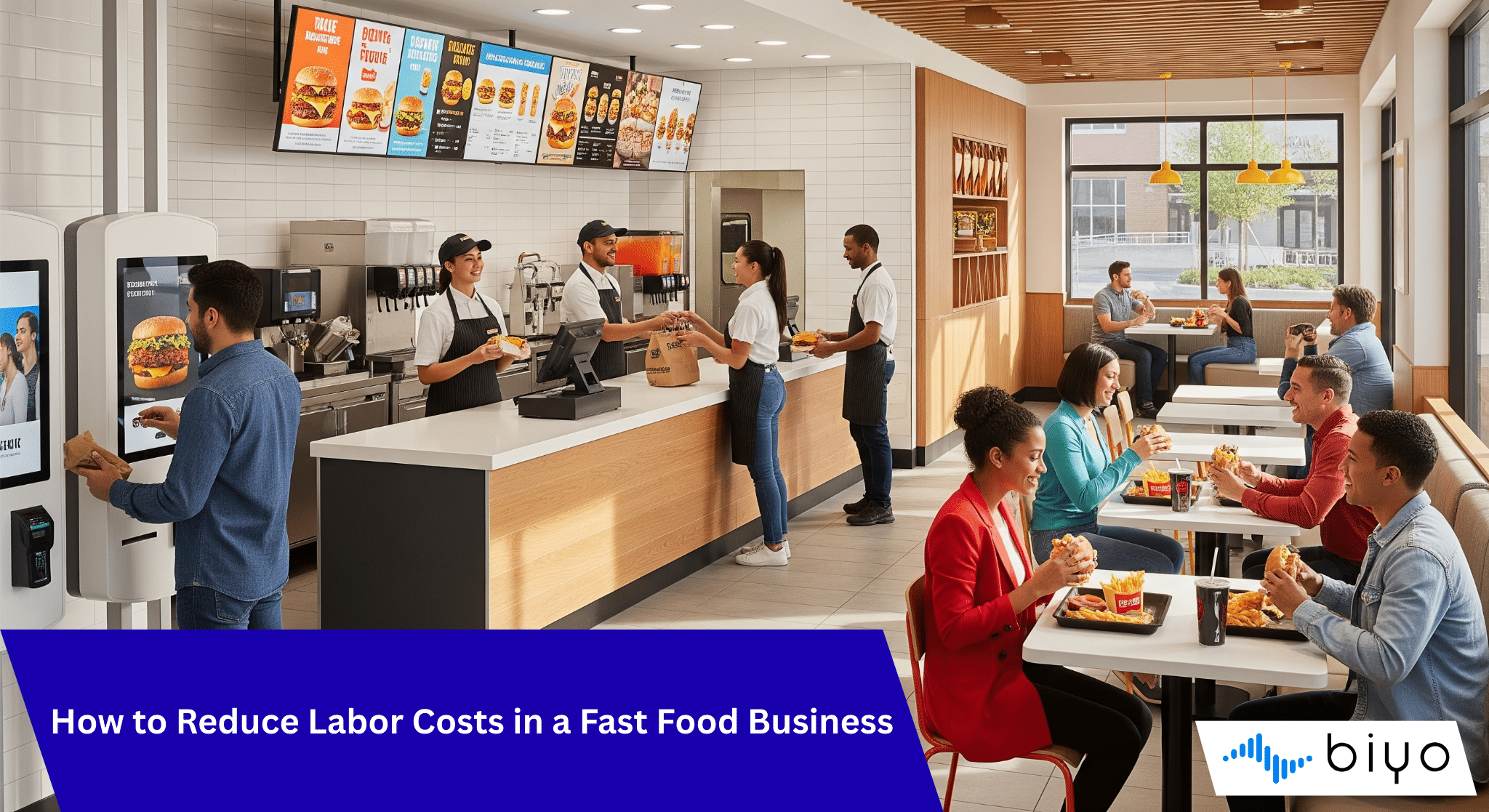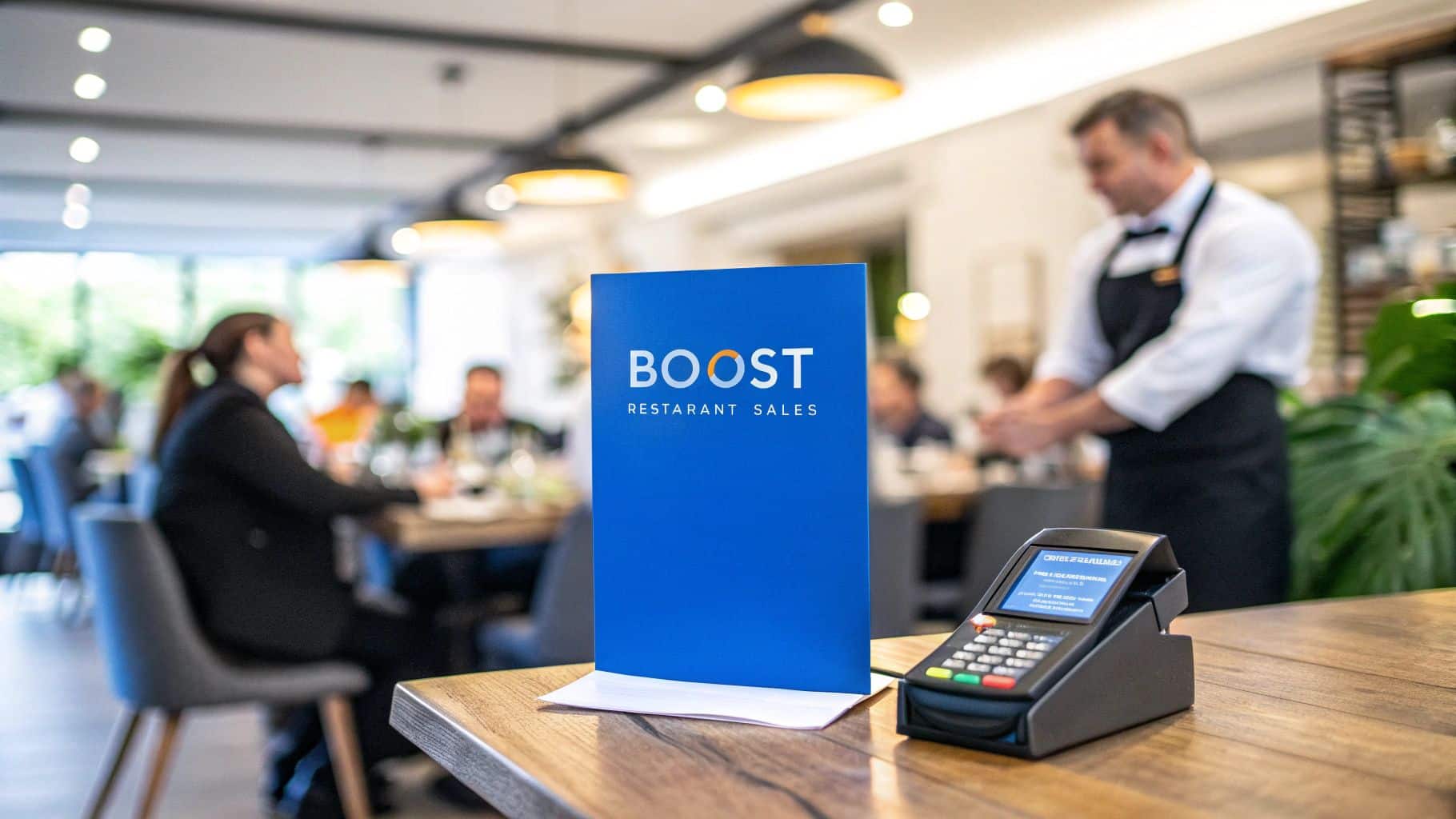Order accuracy plays a pivotal role in the success of any food service business. Whether you’re running a bustling restaurant, a food delivery service, or a café, ensuring that every order is correct can significantly boost customer satisfaction and streamline your operations. The ability to deliver the right dish, with the right modifications, at the right time, without errors, sets your business apart in a competitive market. In this article, we will dive deep into what order accuracy entails, explore strategies to improve it, and highlight technologies like POS integration and kitchen display systems that make error-free transactions achievable.
Table of Contents
- The Importance of Order Accuracy in Food Service
- Technology Enhancing Order Accuracy
- Staff Training and Communication for Precise Orders
- Workflow Optimization for Error Reduction
- Measuring and Maintaining Order Accuracy
- About Biyo POS
- Frequently Asked Questions
The Importance of Order Accuracy in Food Service
Understanding why order accuracy matters is the first step toward improving it. At its core, order accuracy refers to delivering exactly what the customer requested, without mistakes or omissions. This precision impacts not only customer happiness but also operational costs and business reputation.
Customer Satisfaction and Repeat Business
When customers receive their orders exactly as requested, they feel valued and confident in your service. Imagine a diner with specific dietary needs—perhaps gluten intolerance or a peanut allergy. If the kitchen prepares their meal with these restrictions fully observed, the customer’s trust in your establishment grows. This trust often translates into repeat visits and word-of-mouth referrals, which are invaluable for sustained growth. For example, a salad ordered without dressing because of a health preference, or a vegan meal made with careful ingredient substitution, when delivered correctly, can leave a lasting positive impression.
Beyond the individual customer, consistent order accuracy also influences the overall reputation of your business. Positive experiences result in glowing online reviews and higher ratings on platforms like Yelp or Google. Since many diners research restaurants before visiting, the assurance of accurate order fulfillment can sway potential customers to choose your establishment over competitors. In contrast, frequent order mistakes may lead to negative feedback that can deter new clientele.
Additionally, customer satisfaction linked to order accuracy affects your staff’s morale. When servers and kitchen staff receive fewer complaints, they can focus on delivering excellent service rather than handling issues. This positive environment fosters better teamwork and encourages employees to maintain high standards, creating a virtuous cycle of satisfaction for both staff and guests.
Reducing Costs Associated with Mistakes
Incorrect orders don’t just frustrate customers—they also strain your bottom line. Each error in order fulfillment typically results in wasted ingredients and additional labor to remake the dish. Consider a busy evening when multiple orders come through; a single mistake forces the kitchen to duplicate work, increasing food costs and slowing down service. These inefficiencies can add up quickly, cutting into profit margins.
Food waste generated by inaccurate orders has wider implications beyond cost. Many restaurants today emphasize sustainability, aiming to reduce their environmental footprint. Wasting perishable items due to errors contradicts these goals. By improving order accuracy, you not only save money but also contribute to responsible resource management, which can be a selling point for eco-conscious customers.
Furthermore, order mistakes sometimes require compensation, such as offering discounts or free replacements, which again affects profitability. For instance, if a customer receives a burger with onions despite requesting none, they might ask for a refund or refuse to pay. Handling these disputes consumes management time and may damage the relationship with the customer. Implementing rigorous order accuracy practices helps prevent such scenarios and safeguards your revenue.
Impact on Brand Reputation and Operational Efficiency
Order accuracy extends its influence beyond individual transactions by shaping how customers perceive your brand. A reputation for delivering exactly what customers ask for positions your business as professional, reliable, and attentive. This perception attracts new customers and builds loyalty among existing ones. For example, a bakery that consistently gets complex custom orders right—like specific cake designs or dietary adaptations—earns respect and repeat business.
From an operational perspective, accurate orders streamline workflow and reduce unnecessary stress. When kitchen staff receive clear, precise information, they can prepare meals faster and with more confidence. This reduces bottlenecks and errors, especially during peak hours when efficiency is critical. Seamless communication between front-of-house and back-of-house teams minimizes confusion and avoids costly rework.
Ultimately, improved order accuracy enhances the overall dining experience by ensuring meals are served promptly and correctly. This efficiency supports higher table turnover without sacrificing quality, leading to better financial performance. The combined effect of operational excellence and a strong brand reputation creates a solid foundation for long-term success.

Technology Enhancing Order Accuracy
Advances in technology have transformed how restaurants manage orders. By automating key processes and enabling real-time communication, modern tools help businesses reduce errors and improve accuracy. Integrating these technologies into your workflow can bring significant benefits.
POS Integration and Real-Time Updates
Point of Sale (POS) systems today do far more than process payments. Integrated POS solutions allow orders to be entered digitally and sent immediately to the kitchen. This reduces the risk of errors caused by miscommunication or illegible handwriting on paper tickets. For example, if a customer requests no pickles on their sandwich, the POS flags this modification clearly for kitchen staff to follow.
Real-time updates mean the entire team stays synchronized. If a menu item is out of stock or preparation times change, the POS system can notify servers and adjust ordering options accordingly. This prevents errors before they happen and keeps the kitchen workload manageable. Additionally, managers can monitor orders as they progress, ensuring timely fulfillment and quick resolution of issues.
With POS integration, order accuracy improves because data flows seamlessly from customer to kitchen, minimizing human intervention and the chance of mistakes. Digital records also enable analysis of ordering trends and common errors, guiding further improvements in service quality.
Kitchen Display Systems and Ticket Accuracy
Kitchen Display Systems (KDS) replace traditional paper tickets with vibrant digital screens that show orders clearly and in real time. These systems organize orders by priority and preparation station, helping kitchen staff manage multiple requests without confusion. For example, a KDS might highlight allergy alerts or special cooking instructions prominently, ensuring no detail is missed.
Ticket accuracy increases because KDS eliminates lost or smudged tickets, common issues with paper-based systems. Each order is visually distinct and automatically updated if modifications occur. This clarity helps chefs and line cooks focus on precise food preparation rather than deciphering handwritten notes.
Furthermore, many KDS solutions allow staff to mark items as completed or request clarifications instantly. This two-way communication enhances collaboration between front and back of house, reducing errors and improving overall order fulfillment speed. As a result, customers receive their meals correctly and faster, elevating satisfaction.
Digital Ordering and Seamless Processing
Online and mobile ordering platforms have become essential, especially in today’s fast-paced environment. Digital ordering reduces the possibility of human error by allowing customers to enter their preferences directly. This approach ensures special requests, dietary restrictions, and meal customizations are accurately captured.
Integration between digital ordering and POS or KDS systems allows orders to flow smoothly from customer to kitchen without manual re-entry. For instance, a customer using an app to build a meal from multiple components will have their selections transmitted exactly as chosen, avoiding misinterpretations. This accuracy also extends to delivery services, where precise order details minimize mistakes that could lead to returns or complaints.
Moreover, digital ordering systems often include visual menus with photos and ingredient descriptions, helping customers make informed choices and reducing confusion. The transparent process supports order verification and seamless processing, resulting in higher order accuracy and better overall experience.
Staff Training and Communication for Precise Orders
While technology is a powerful ally, human factors remain central to achieving order accuracy. Proper staff training and open communication channels ensure every team member understands their role in minimizing mistakes and delivering excellent service.
Importance of Staff Training in Order Accuracy
Training equips staff with the knowledge and skills to handle orders correctly, use technology effectively, and manage customer interactions. Servers learn how to take clear, detailed orders and enter them accurately into the POS system. Kitchen staff gain familiarity with kitchen display systems and the importance of following precise instructions, especially for modifications or allergy alerts.
Role-playing and scenario-based training help staff anticipate challenges. For example, practicing how to confirm special dietary needs or how to handle last-minute changes builds confidence and reduces errors. Consistent refresher courses keep the team updated on new menu items, technology updates, and best practices.
Moreover, training fosters a culture of accountability and pride in delivering perfect orders. Employees who understand the impact of their accuracy on customer satisfaction and business success are more motivated to maintain high standards. This commitment to excellence translates directly into fewer mistakes and better service quality.
Enhancing Kitchen Communication and Collaboration
Clear communication between servers and kitchen staff is essential for translating customer requests into accurate meals. Establishing protocols such as repeating orders aloud, confirming special instructions, and immediately addressing questions helps reduce misunderstandings. For instance, if a server is unsure whether the kitchen received a request to hold the cheese, asking for confirmation prevents errors.
Many restaurants use communication tools such as headsets, instant messaging, or shared digital notes to maintain constant dialogue. These tools enable quick clarification and updates, which are especially useful during busy periods. When the kitchen encounters an issue, such as running out of an ingredient, prompt communication allows servers to inform customers and adjust orders smoothly.
Collaboration between front and back of house builds teamwork and trust. When each party understands the other’s challenges and responsibilities, they work together more effectively to ensure every order is prepared and delivered correctly. This synergy enhances overall order accuracy and customer experience.
Utilizing Order Verification and Confirmation Practices
Order verification acts as the final safeguard before food reaches the customer. One common practice is the “read-back” method, where servers repeat the order details aloud to customers before sending them to the kitchen. This step allows customers to confirm or correct their requests, reducing the risk of mistakes.
In the kitchen, staff can double-check tickets against orders before preparing meals, ensuring all modifications are included. Some establishments use printed or digital checklists that highlight key customer requests or allergy alerts for added attention. Servers also verify orders upon delivery by reviewing items with customers, especially for complex or large orders.
POS systems often incorporate prompts or alerts that remind staff to confirm critical details, such as removing an allergen or applying a discount. These technological aids, combined with human verification, form a robust process that catches errors early. Together, these methods contribute significantly to maintaining high order accuracy standards.
Workflow Optimization for Error Reduction
Designing workflows that reduce the chance of mistakes helps restaurants maintain order accuracy even during busy times. Streamlined processes and clear responsibilities enable staff to focus on precision and efficiency simultaneously.
Implementing Efficient Order Processing Systems
Effective order processing minimizes redundant steps and manual handling. Integrating POS systems with kitchen display screens and inventory management software automates data flow, reducing errors caused by transcription or forgetfulness. For example, when an item sells out, the system can automatically disable its ordering option, preventing unavailable items from being requested.
Orders can be prioritized and grouped logically by preparation time or kitchen station. This approach helps cooks manage their workload and reduces the risk of mixing up orders. Timestamping and digital tracking ensure that orders progress smoothly through the system and any delays are quickly addressed.
Automated reporting tools identify bottlenecks or recurring issues, allowing managers to tweak workflows and allocate resources more effectively. These adjustments improve overall speed and accuracy, benefiting both customers and staff.
Standardizing Procedures to Ensure Consistency
Standard Operating Procedures (SOPs) create uniformity in how orders are handled from start to finish. These documented processes detail each step, such as how to take orders, input them into the POS, prepare meals, and confirm delivery. This standardization reduces variability, which is often a root cause of errors.
By using checklists, recipe cards, and clear communication protocols, all staff members operate with the same expectations. For example, an SOP might require servers to confirm allergy requests twice or mandate that kitchen staff verify ticket details before cooking. This clarity prevents confusion, especially for new or temporary employees.
Reviewing and updating SOPs regularly ensures they remain relevant as menus, technology, or staffing change. Consistency in procedures helps maintain high order accuracy levels and improves training effectiveness.
Leveraging Quality Control and Feedback Loops
Regular quality control checks monitor order accuracy and identify areas needing improvement. Managers or quality supervisors can randomly sample orders during shifts to verify if meals meet specifications and customer requests are fulfilled correctly. This practice helps catch problems before they escalate.
Creating feedback loops where staff can report challenges or suggest improvements encourages continuous learning. For instance, if multiple errors occur due to unclear menu descriptions, the team can collaborate on clearer wording or additional training. Involving employees in problem-solving fosters ownership and engagement.
Customer feedback also plays a crucial role in quality control. Encouraging diners to share their experiences and promptly addressing complaints demonstrate a commitment to accuracy and service excellence. Together, these efforts build a culture focused on delivering flawless orders consistently.
Measuring and Maintaining Order Accuracy
Tracking performance and committing to ongoing improvements ensure that order accuracy becomes a sustained strength rather than a fleeting achievement. Using data-driven approaches and listening to customers keeps restaurants aligned with high standards.
Key Metrics to Monitor Order Accuracy
Quantifying order accuracy requires clear, actionable metrics. Common indicators include the percentage of orders delivered without errors, the number of order corrections or refunds, and the frequency of customer complaints related to mistakes. Monitoring these over time highlights trends and potential problem areas.
POS systems can generate detailed reports showing when and where errors occur, such as specific menu items, shifts, or staff members. Analyzing this data allows managers to target training or process improvements strategically. For example, if a particular dish is prone to mistakes, revising its preparation steps or updating POS prompts can help.
Combining quantitative metrics with qualitative feedback from customers and employees provides a comprehensive view of order accuracy. This holistic approach supports informed decision-making and continuous refinement of operations.
Maintaining Accuracy Through Continuous Improvement
Order accuracy is not a “set it and forget it” goal; it requires constant attention. Regular training sessions keep staff sharp and aware of the importance of accuracy. Technology updates, such as new POS features or enhanced kitchen displays, should be implemented thoughtfully with proper staff onboarding.
Setting clear accuracy goals and recognizing team achievements motivates employees to maintain high standards. Celebrating milestones like “100 error-free orders in a day” reinforces positive behaviors and builds pride. When mistakes occur, analyzing root causes without blame encourages a learning mindset and continuous growth.
Periodic process reviews and technology assessments help identify new opportunities to enhance accuracy and efficiency. This ongoing commitment positions restaurants to adapt to evolving customer expectations and operational challenges successfully.
Role of Customer Feedback and Adaptation
Customers offer invaluable insights into order accuracy through their experiences. Collecting feedback via surveys, online reviews, or direct conversations helps identify hidden issues. For example, repeated mentions of incorrect substitutions or missing items signal the need for attention.
Acting on feedback promptly improves trust and demonstrates that the business values its patrons. Restaurants can adjust menus, retrain staff, or enhance digital ordering platforms based on customer suggestions. This adaptability ensures order accuracy evolves alongside customer needs.
Maintaining open channels for communication with customers fosters loyalty and encourages honest dialogue. Customers who feel heard are more forgiving of occasional mistakes and more likely to return, making feedback a cornerstone of sustained order accuracy excellence.

About Biyo POS
Biyo POS offers a comprehensive solution designed to elevate order accuracy and streamline restaurant operations. With seamless POS integration, real-time kitchen display systems, and digital ordering capabilities, Biyo POS reduces errors and accelerates service. Its intuitive interface and robust staff training tools empower teams to deliver precise food preparation and consistent customer satisfaction. Choosing Biyo POS means equipping your business with the technology and support needed to thrive in today’s competitive foodservice landscape.
Frequently Asked Questions
What is order accuracy and why is it important?
Order accuracy means delivering exactly what the customer ordered without mistakes. It’s important because it directly influences customer satisfaction, reduces food waste, and improves operational efficiency. Consistently accurate orders build trust, encourage repeat business, and protect your brand’s reputation.
How can technology improve order accuracy?
Technology like integrated POS systems and kitchen display systems automates order transmission and communication, reducing human error. These tools provide real-time updates, clarify order details, and track progress, helping staff fulfill orders precisely and promptly.
What role does staff training play in maintaining order accuracy?
Staff training ensures servers and kitchen teams know how to accurately take, enter, and prepare orders. Training programs also emphasize communication, verification, and attention to detail, which collectively reduce mistakes and improve customer experience.
How do restaurants measure order accuracy?
Restaurants track metrics such as error-free order percentages, frequency of corrections, and customer complaints. Analyzing POS reports and gathering customer feedback help identify patterns and inform improvements to maintain high accuracy.
Can Biyo POS help improve my restaurant’s order accuracy?
Yes, Biyo POS provides integrated solutions that streamline order entry, kitchen communication, and staff management. These features work together to minimize errors and support consistent, reliable order fulfillment, enhancing customer satisfaction and operational efficiency.




